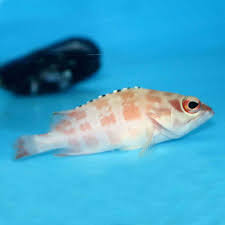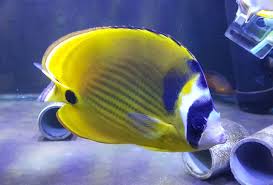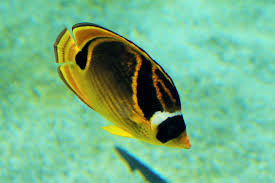
The dragon is one of the most prominent and enduring symbols in Chinese culture. Revered for its power, wisdom, and auspicious qualities, it has been a central figure in Chinese mythology, art, and folklore for centuries. In contemporary Chinese art, the dragon continues to hold significant meaning, serving as a link between the rich traditions of the past and the dynamic artistic innovations of the present. In this article, we will explore the role of the dragon in modern Chinese art, examining how contemporary artists reinterpret and reimagine this mythical creature in their work.
The Dragon: A Symbol of Tradition
Before diving into its role in contemporary art, it is important to understand the cultural significance of the dragon in traditional Chinese culture. The dragon is traditionally seen as a powerful and benevolent creature, a symbol of the emperor’s authority, prosperity, and divine protection. It represents the balance of forces in the universe and is often associated with water, fertility, and nature.
Historically, dragons were an important part of Chinese art, appearing in paintings, sculptures, and even architecture. They were depicted in intricate designs on imperial robes, ceramics, and other decorative arts. The Chinese dragon, unlike its Western counterpart, is typically depicted as a long, serpentine creature with antler-like horns, a lion-like head, and fish-like scales. It is often shown in motion, spiraling through clouds or across waves, evoking a sense of dynamism and energy.
In contemporary Chinese art, the dragon retains its cultural significance, but it is often reinterpreted in ways that reflect the changing social, political, and artistic landscape of China. While traditional depictions of the dragon were often tied to imperial power and religious beliefs, contemporary representations are more varied, and the dragon serves as a symbol of Chinese identity, heritage, and national pride.
The Dragon in Contemporary Art: A Bridge Between Tradition and Modernity
Contemporary Chinese artists have a unique ability to blend traditional symbolism with modern techniques and concepts. The dragon, as a cultural icon, has become a vehicle through which artists explore themes of transformation, national identity, globalization, and the tension between tradition and modernity.
One of the most striking features of contemporary Chinese dragon art is its departure from traditional forms. While traditional dragon images often adhered to strict, classical depictions, contemporary artists are more likely to experiment with abstraction, surrealism, and other avant-garde techniques. These reimagined dragons can be seen in a variety of media, including painting, sculpture, installations, and digital art, offering fresh interpretations of an ancient symbol.
For many contemporary Chinese artists, the dragon represents a sense of national pride and cultural heritage. In a rapidly changing society, where China is asserting its position as a global superpower, the dragon has become a symbol of resilience, power, and progress. By incorporating the dragon into their artwork, artists not only pay homage to their cultural roots but also engage with broader themes of modernization and the complexities of contemporary Chinese identity.
The Role of the Dragon in the Works of Key Contemporary Artists
Many contemporary Chinese artists have used the dragon as a central motif in their work, each offering their own unique interpretation of the creature. Below are some notable artists who have explored the dragon in their work and how they have redefined the traditional symbol:
1. Xu Bing: Reinterpreting the Dragon in Printmaking
Xu Bing is one of China’s most internationally renowned contemporary artists. Known for his innovative work in printmaking and installation art, Xu Bing has explored themes of language, culture, and identity. In his work, the dragon often appears as a metaphor for the power of language and the interconnectedness of different cultures.
One of Xu Bing’s notable works, “A Book from the Sky” (1987-1991), features characters that mimic Chinese calligraphy but are entirely invented. While this piece doesn’t feature a direct depiction of the dragon, it reflects Xu Bing’s exploration of language as a form of cultural transformation. For Xu Bing, the dragon is a symbol of the fluidity and adaptability of language and culture in the modern world.
In his later works, Xu Bing has used the dragon as a symbol of the evolution of Chinese culture. His “Dragonfly Eyes” (2017), a multimedia project that blends film and technology, uses the dragon as a symbol of Chinese mythology in the context of a rapidly changing society. The dragon, in Xu Bing’s work, is not just a figure from the past but a living, evolving symbol that is continually reimagined in response to the forces of globalization and technological progress.
2. Zeng Fanzhi: The Dragon as a Symbol of Power and Intensity
Zeng Fanzhi is another prominent Chinese artist whose work often reflects themes of identity, power, and the complexities of modern life. Known for his expressive brushwork and emotional intensity, Zeng has used the dragon in his artwork to convey a sense of power and intensity, reflecting the anxieties and contradictions of contemporary China.
Zeng’s famous “Mask Series” (1994-2000) features large, imposing portraits of figures wearing masks, symbolizing the alienation and disconnection felt by many in China’s rapidly changing society. While the dragon does not appear explicitly in these works, its presence can be felt in the underlying themes of strength, identity, and the struggle for control.
In his later works, Zeng Fanzhi has incorporated dragon imagery more directly, using the dragon as a metaphor for the explosive energy and potential of modern China. For Zeng, the dragon is a symbol of both power and fragility, embodying the tensions and contradictions inherent in Chinese society. His large-scale paintings and sculptures often feature bold, colorful depictions of the dragon, rendered in a style that combines both traditional and contemporary elements.
3. Cai Guo-Qiang: Explosions and Dragons as Expressions of Cultural Power
Cai Guo-Qiang is one of China’s most influential contemporary artists, known for his large-scale installations and pyrotechnic performances. Cai’s work often explores themes of power, transformation, and the relationship between humanity and nature. His use of fireworks and explosives as artistic mediums aligns with the idea of the dragon as a force of nature, capable of both creation and destruction.
Cai’s use of the dragon in his work is both literal and symbolic. In his famous “Sky Ladder” (2015) project, Cai created a massive fireworks display that launched a ladder into the sky, symbolizing the aspiration for progress and transcendence. While the dragon does not appear explicitly in this piece, the idea of explosive, transformative energy is closely related to the dragon’s symbolism in Chinese culture.
In his work “The Dragon’s Head” (2006), Cai Guo-Qiang created a large-scale installation featuring a dragon made of fireworks, which exploded upon ignition. The dragon’s fiery, explosive nature is meant to symbolize the immense power and energy of Chinese culture, while also reflecting the destructive forces of history and progress. For Cai, the dragon represents both the triumphs and the challenges of contemporary Chinese identity.
The Dragon and Globalization: A Complex Symbol in Contemporary Chinese Art
As China continues to assert its global influence, the dragon has taken on new meanings in the context of globalization. The dragon is no longer just a symbol of national identity but has become a powerful global icon, recognized and reinterpreted by artists and audiences worldwide. In contemporary Chinese art, the dragon often represents the intersection of tradition and modernity, as well as the tension between global and local identities.
Some artists, such as Ai Weiwei, have used the dragon as a symbol of resistance and critique. Ai’s politically charged work often challenges the authority of the Chinese government, and in some of his pieces, the dragon represents both the power and the oppression inherent in Chinese society. By appropriating the dragon in his work, Ai Weiwei confronts the symbol of power and reimagines it as a tool for social commentary and resistance.
For other artists, the dragon serves as a reminder of the resilience and adaptability of Chinese culture in the face of rapid social and economic changes. In a world that is becoming increasingly interconnected, the dragon has become a metaphor for the strength and endurance of Chinese heritage, even as it continues to evolve in response to global influences.
Conclusion: The Enduring Power of the Dragon in Contemporary Chinese Art
The dragon remains one of the most enduring and powerful symbols in Chinese culture, and its presence in contemporary Chinese art speaks to the ongoing relevance of traditional motifs in a rapidly changing world. Through the work of artists like Xu Bing, Zeng Fanzhi, Cai Guo-Qiang, and others, the dragon continues to evolve, reflecting the complexities of modern Chinese identity and its relationship to the forces of globalization, power, and cultural transformation.
In contemporary Chinese art, the dragon is not just a static symbol but a dynamic force that embodies the ongoing interplay between tradition and modernity. As artists continue to experiment with new mediums and forms, the dragon remains a central figure in the exploration of Chinese culture, identity, and the tensions of a rapidly changing world. Through their reimagining of the dragon, contemporary Chinese artists ensure that this ancient symbol remains as relevant and powerful as ever.










